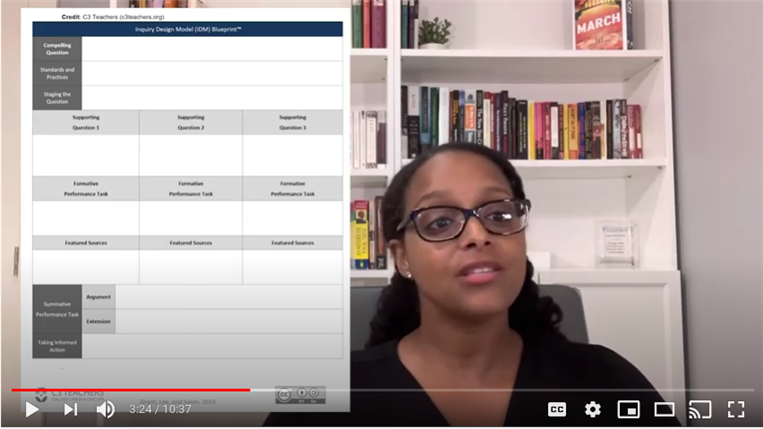I like the idea of using the IDM in my classroom, but does anyone know of a good place to learn how to pull it off successfully? I've had trouble wokring it into my classes in a reasonable amount of time before. thanks
I like the idea of using the IDM in my classroom, but does anyone know of a good place to learn how to pull it off successfully? I've had trouble wokring it into my classes in a reasonable amount of time before. thanks
Thanks for the tag, Rikki! I promise to write more later, but take a look at this document Andrew Johnson Karen Twomey to help you visualize the IDM model - to get your brain thinking about it. It's actually…
Thanks! I was referencing a template that the speaker held up in the video. Now I'm trying to remeber where and what video it was, there is so much wonderful content here, just spending the time to find…
Wow! You folks are absolutely amazing, thanks!!!!!
Hi Andrew Johnson, welcome to the community, and thank you for asking that question! I'm going to tag in one of our veteran teachers Erik Christensen to share some ideas :).
Hi Andrew Johnson, welcome to the community, and thank you for asking that question! I'm going to tag in one of our veteran teachers Erik Christensen to share some ideas :).
Thanks for the tag, Rikki! I promise to write more later, but take a look at this document Andrew Johnson Karen Twomey to help you visualize the IDM model - to get your brain thinking about it. It's actually a completed model of the sheet that Elleni references in her presentation. I'll be back later with some more information! As you might predict, OER Project courses naturally lend themselves to the IDM model.
Thanks! I was referencing a template that the speaker held up in the video. Now I'm trying to remeber where and what video it was, there is so much wonderful content here, just spending the time to find where everythign is. Wondering if there is one consolidated folder or hyperlink document that guides you to all the supporting documents for each course. I'm inding myself on a bit of a scavenger hunt for each piece.
With gratitude.
Hi Karen -
Unfortunately, I don't think there is a repository for all of the resources, links, etc. shared in the Track Talks. But what a wonderful idea!
Let's see if I can help you out with your original question about the IDM template.
Here's a screenshot of the IDM template Elleni is holding up.

This (blank) template is linked here.
The website she is referring to is the IDM website from C3.
https://c3teachers.org/inquiry-design-model/
Does this help you out?
Wow! You folks are absolutely amazing, thanks!!!!!
I think the best way to do IDM in your classroom is to just jump in and try it. It's difficult (mostly in the time it takes to design and curate) to do correctly, but also really hard to mess it up. (If that makes sense.)
IDM works best at a Unit level.
Let's do an example for WHP Origins Era 2.